26th August, 2025
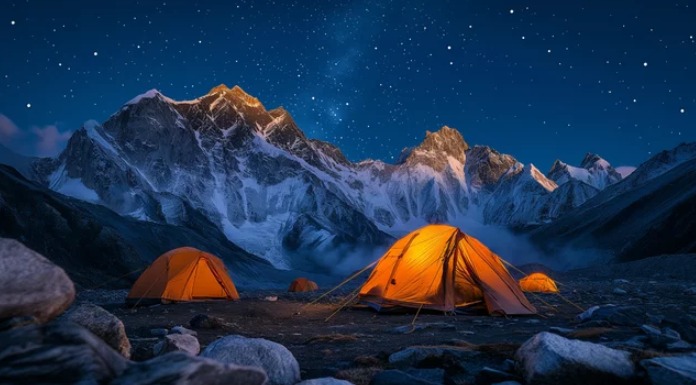
Apr 15, 2024
Island Peak Climbing In January
- What time of year is best to climb Island Peak?
- Can you climb Island Peak in January?
- Can a beginner climb Island Peak?
- Can you do Everest Base Camp with Island Peak in January?
- Why Island Peak Climbing in January
- What should I Pack for Island Peak Climbing
- Island Peak Climbing Highlights in January
- Weather, Temperature, and Climate in January
- Guide, Porter, Food, Permit, and Accommodation
- Island Peak Climbing Cost
- Is Island Peak Expedition For You?
- How do you Train for Island Peak Climbing?
- Does Island Peak Climbing require prior climbing experience?
- What are the possibilities of getting altitude sickness during Island Peak Climb?
- How challenging is the Island Peak Climb?
- How long does it take to climb Island Peak?
- Is Mt. Everest visible from the Island Peak summit?
- Final Say
- Island Peak Climbing Packages
Climbing Island Peak in January offers a thrilling adventure amidst the breathtaking landscapes of the Everest region in Nepal. Also known as Imja Tse, Island Peak stands at 6,189 meters (20,305 feet) and is one of the most popular trekking peaks in the Himalayas, renowned for its stunning summit views and challenging ascent.
January marks the heart of winter in the Himalayas, characterized by clear skies, crisp air, and pristine snow-covered landscapes. The trek to Island Peak typically begins with a scenic flight from Kathmandu to Lukla, followed by a trek through Sherpa villages, rhododendron forests, and alpine meadows. The trail offers glimpses of traditional Sherpa culture and hospitality, with opportunities to explore Buddhist monasteries adorned with prayer flags.
As climbers ascend towards Island Peak Base Camp and High Camp, the landscape transforms into a winter wonderland, surrounded by towering Himalayan peaks such as Everest (8,848m), Lhotse, and Ama Dablam. The climb itself requires technical skills, including the use of ropes, crampons, and ice axes, particularly on the steep sections leading to the summit ridge.
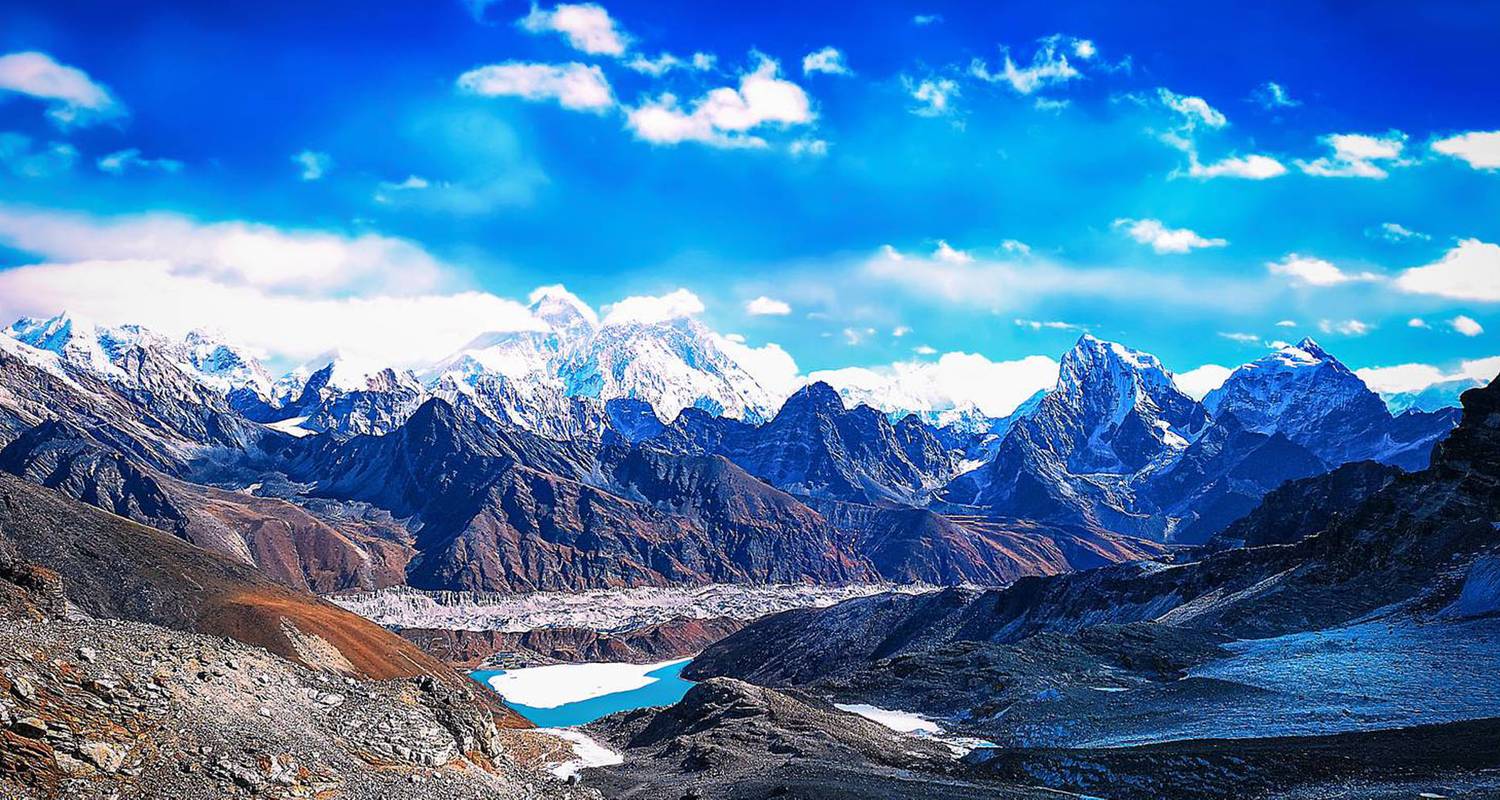
Everest Three High Pass Trek with Island Peak Climbing
The Everest Three High Pass Trek with Island Peak Climbing is an exhilarating and challenging adventure that takes you through the stunning landscapes of the Everest region in Nepal. This 23-25...
The summit day typically starts before dawn, with climbers navigating a steep glacier and rocky terrain under the guidance of experienced Sherpa guides. The final push to the summit rewards climbers with unparalleled views of the Everest massif and surrounding peaks glowing in the morning light. The sense of achievement upon reaching the summit of Island Peak is profound, making it a memorable highlight of the journey.
January weather in the Everest region brings cold temperatures, with daytime averages ranging from -5°C to 5°C at lower elevations like Namche Bazaar. Nighttime temperatures can drop significantly below freezing, requiring climbers to pack adequate cold-weather gear, including down jackets, thermal layers, gloves, and hats.
While January offers clear skies and reduced precipitation compared to other months, climbers must be prepared for variable weather conditions and potential snowfall. Proper acclimatization, hydration, and a gradual ascent are crucial to mitigate altitude sickness risks during the climb.
Accommodation during the Island Peak expedition includes tents at Base Camp and High Camp, providing essential shelter and warmth amidst the alpine environment. Meals are typically provided by the trekking agency, ensuring climbers receive nourishing food to sustain energy levels throughout the climb.
Overall, Island Peak climbing in January presents a challenging yet rewarding mountaineering experience in the Himalayas, combining technical climbing with stunning vistas of snow-capped peaks and serene landscapes. It offers adventurers a chance to test their skills and endurance in one of the world's most spectacular mountain ranges, creating memories that last a lifetime.
What time of year is best to climb Island Peak?
The best time to climb Island Peak, also known as Imja Tse, is during the pre-monsoon (spring) and post-monsoon (autumn) seasons in Nepal. These typically fall between March to May and September to November, respectively. During these months, the weather is relatively stable with clear skies, mild temperatures, and less precipitation, making it safer and more enjoyable for climbers. Spring offers beautiful rhododendron blooms and longer daylight hours, while autumn provides clearer views and favorable climbing conditions after the monsoon rains.

ISLAND PEAK SUMMIT RETURN BY HELICOPTER
Many of us only dream of standing on a tall peak looking down on the world. This is a great climb that will satisfy this desire. Island Peak, also referred to as Imja Tse, is a 6187-meter high peak in...
Can you climb Island Peak in January?
Yes, Island Peak can be climbed in January, but it presents significant challenges due to winter conditions. January is the coldest month in the Everest region, with temperatures dropping well below freezing, especially at higher elevations. Snowfall is common, and the trails leading to Island Peak Base Camp and High Camp can be snow-covered and icy, requiring climbers to navigate carefully. The climb itself involves technical sections that may be more demanding in winter conditions, such as steep ascents on snow and ice.
Climbing Island Peak in January requires proper preparation, including cold-weather gear, mountaineering experience, and physical fitness. It's essential to be well-acclimatized and aware of the risks associated with high-altitude climbing during winter. Experienced climbers or those with adequate training and support from qualified guides can undertake the challenge, but it is not recommended for beginners or those without prior mountaineering experience.
Can a beginner climb Island Peak?
Island Peak is technically challenging and requires prior mountaineering experience, particularly in using crampons, ice axes, and ropes. While it is possible for beginners to climb Island Peak with proper training, guidance from experienced Sherpa guides, and a reputable trekking agency, it is generally recommended that climbers have previous high-altitude trekking and basic mountaineering experience. Climbers should be comfortable with long days of trekking, acclimatization processes, and the physical demands of ascending steep, icy slopes.
For beginners aspiring to climb Island Peak, a comprehensive training program in mountaineering skills, physical conditioning, and altitude adaptation is essential. Starting with smaller peaks and gradually building experience in high-altitude environments can significantly improve success and safety on more challenging climbs like Island Peak.
Can you do Everest Base Camp with Island Peak in January?
Yes, it is possible to combine the Everest Base Camp trek with an ascent of Island Peak in January, but it requires careful planning and preparation. The Everest Base Camp trek provides acclimatization and scenic trekking through the Khumbu region, culminating in the iconic view of Everest. Adding Island Peak involves a separate climb from Island Peak Base Camp, which typically requires additional days and logistical arrangements.

ISLAND PEAK CLIMBING
Sherpa Expedition & Trekking (Est.1977) are pleased to announce FOR ADVENTURERS the most awesome, exhilarating & unforgettable climbing and treks on offer anywhere today!...
In January, trekkers should be prepared for cold temperatures, snowy trails, and possible flight delays to Lukla due to weather conditions. The combination of Everest Base Camp and Island Peak offers a comprehensive Himalayan adventure, blending cultural immersion, trekking challenges, and mountaineering achievement. It is recommended to engage with a reputable trekking agency that can provide experienced guides, logistical support, and ensure safety throughout the expedition.
Undertaking both Everest Base Camp and Island Peak in January requires a good level of fitness, prior trekking experience at high altitudes, and readiness to adapt to winter mountain conditions. With proper preparation and guidance, January can provide a unique and rewarding experience of exploring the Everest region and summiting a Himalayan peak.
Why Island Peak Climbing in January
Island Peak climbing in January offers a unique adventure amidst the serene winter landscapes of the Everest region. January is characterized by clear skies, providing stunning views of snow-capped peaks and pristine alpine scenery. The quieter trails and fewer climbers enhance the sense of solitude and tranquility, allowing for a more intimate experience with the mountains. Climbing Island Peak in January also presents a challenge due to colder temperatures and potential snowfall, requiring climbers to be well-prepared with appropriate gear and physical conditioning. For those seeking a quieter, more adventurous Himalayan climb with breathtaking winter vistas, January offers an ideal opportunity to conquer Island Peak.
What should I Pack for Island Peak Climbing
Packing for Island Peak climbing in January requires careful consideration of cold-weather gear and mountaineering essentials. Essential items include:
- Clothing: Thermal base layers, insulated jacket, waterproof and windproof outer layers, trekking pants, gloves, hats, and socks.
- Footwear: Sturdy trekking boots with good ankle support and crampon-compatible for icy terrain.
- Gear: Sleeping bag suitable for sub-zero temperatures, crampons, ice axe, harness, helmet, trekking poles, and a headlamp.
- Accessories: Sunglasses with UV protection, sunscreen, lip balm, and a high-altitude trekking backpack.
- Personal Items: First aid kit, toiletries, lightweight towel, and any necessary medications.
- Documents: Valid passport, permits (including climbing permit), travel insurance, and emergency contact information.
Packing efficiently while keeping weight manageable is crucial for comfort and safety during the climb.
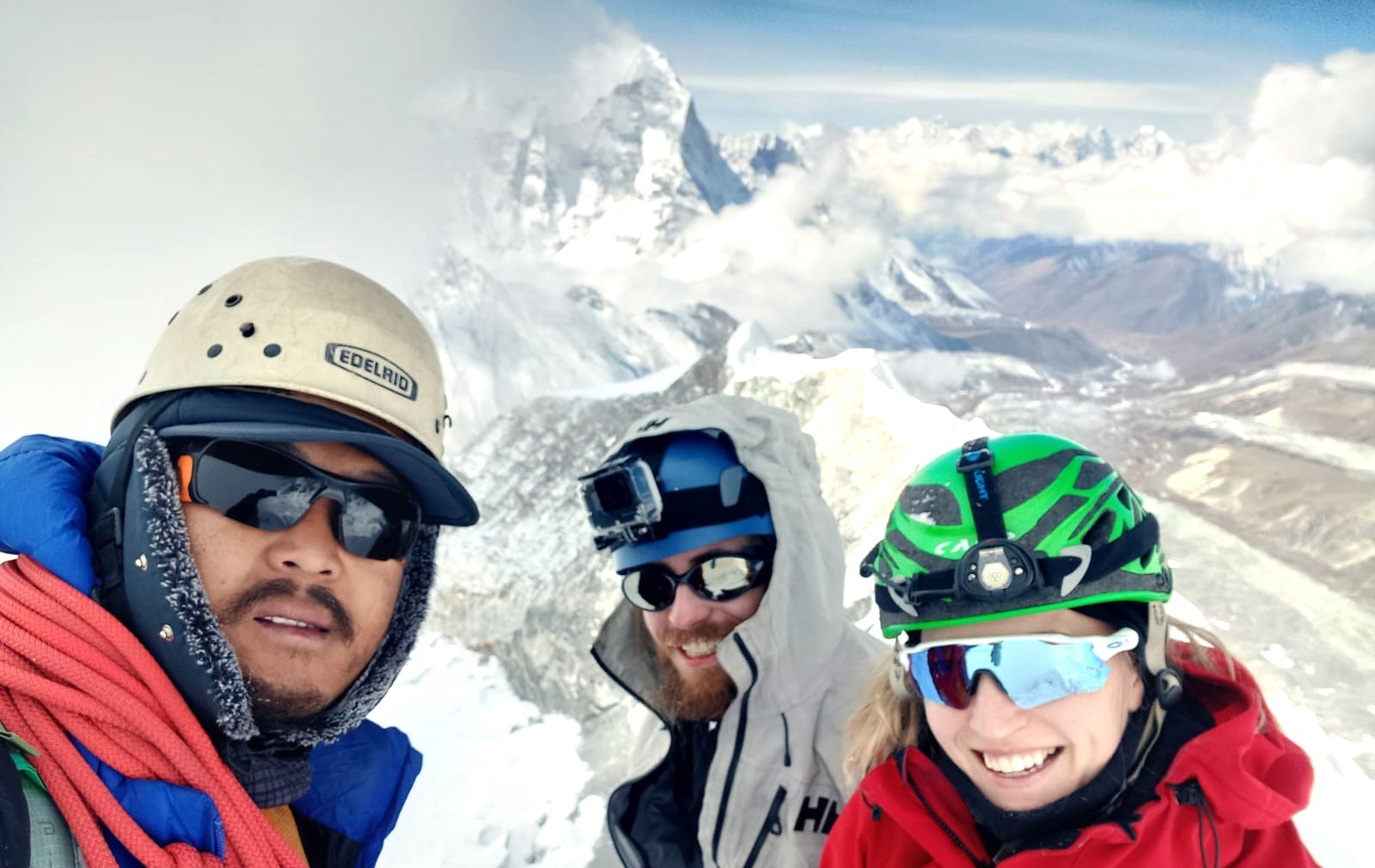
ISLAND PEAK EXPEDITION 15 DAYS
Island Peak, also known as Imja Tse, is a popular peak located in the Khumbu region of Nepal. This peak is a part of the Himalayas and stands tall at a height of 6,189 meters above sea level. Island P...
Island Peak Climbing Highlights in January
Island Peak climbing in January offers memorable highlights amidst the winter wonderland of the Everest region. Highlights include:
- Snow-Covered Landscapes: Pristine white landscapes and snowy trails enhance the beauty of the climb.
- Clear Skies: Clear weather provides excellent visibility of Everest, Lhotse, and other Himalayan peaks.
- Challenging Ascent: Technical climbing sections, including steep ascents and glacier crossings, test climbers' skills and endurance.
- Summit Views: Panoramic views from the summit of Island Peak offer a rewarding experience and stunning photo opportunities.
- Cultural Experience: Interaction with local Sherpa communities and visits to Buddhist monasteries enrich the cultural experience.
- Winter Solitude: Quieter trails and fewer climbers allow for a peaceful and immersive Himalayan adventure.
Island Peak climbing in January combines physical challenge with natural beauty, making it a memorable expedition for mountaineering enthusiasts.
Weather, Temperature, and Climate in January
January in the Everest region brings cold temperatures and clear skies, ideal for Island Peak climbing. Daytime temperatures at lower elevations like Lukla and Namche Bazaar range from -5°C to 5°C, while nighttime temperatures can drop well below freezing, especially at higher altitudes. The climate is dry with minimal precipitation, though occasional snowfall can occur, particularly at higher elevations and on the summit approach.
Climbers should prepare for sub-zero temperatures during the climb, ensuring adequate insulation and protection against cold weather. Clear skies in January offer excellent visibility for climbing and enjoying panoramic views of the Himalayas. Proper acclimatization, hydration, and monitoring of weather conditions are essential for a safe and successful Island Peak climbing expedition in January.
Guide, Porter, Food, Permit, and Accommodation
For Island Peak climbing in January, engaging with a reputable trekking agency is essential for logistical support and safety. Here’s what to expect:
- Guide: Experienced Sherpa guides provide expertise in navigating the route, managing technical sections, and ensuring safety throughout the climb.
- Porter: Porters assist with carrying equipment and supplies, allowing climbers to focus on the ascent. They play a crucial role in supporting the expedition.
- Food: Meals are typically provided at teahouses or camping sites along the trekking route. Warm, nourishing meals help maintain energy levels during the climb.
- Permit: Climbing permits are required for Island Peak, obtained through the Nepal Mountaineering Association (NMA) or a licensed trekking agency. Permits ensure compliance with regulations and support local conservation efforts.
- Accommodation: Accommodation includes teahouses or camping at Island Peak Base Camp and High Camp. Basic facilities provide shelter and comfort amidst the mountain environment.
Choosing a trekking agency that prioritizes safety, sustainability, and quality service enhances the Island Peak climbing experience in January, ensuring a memorable and rewarding Himalayan adventure.
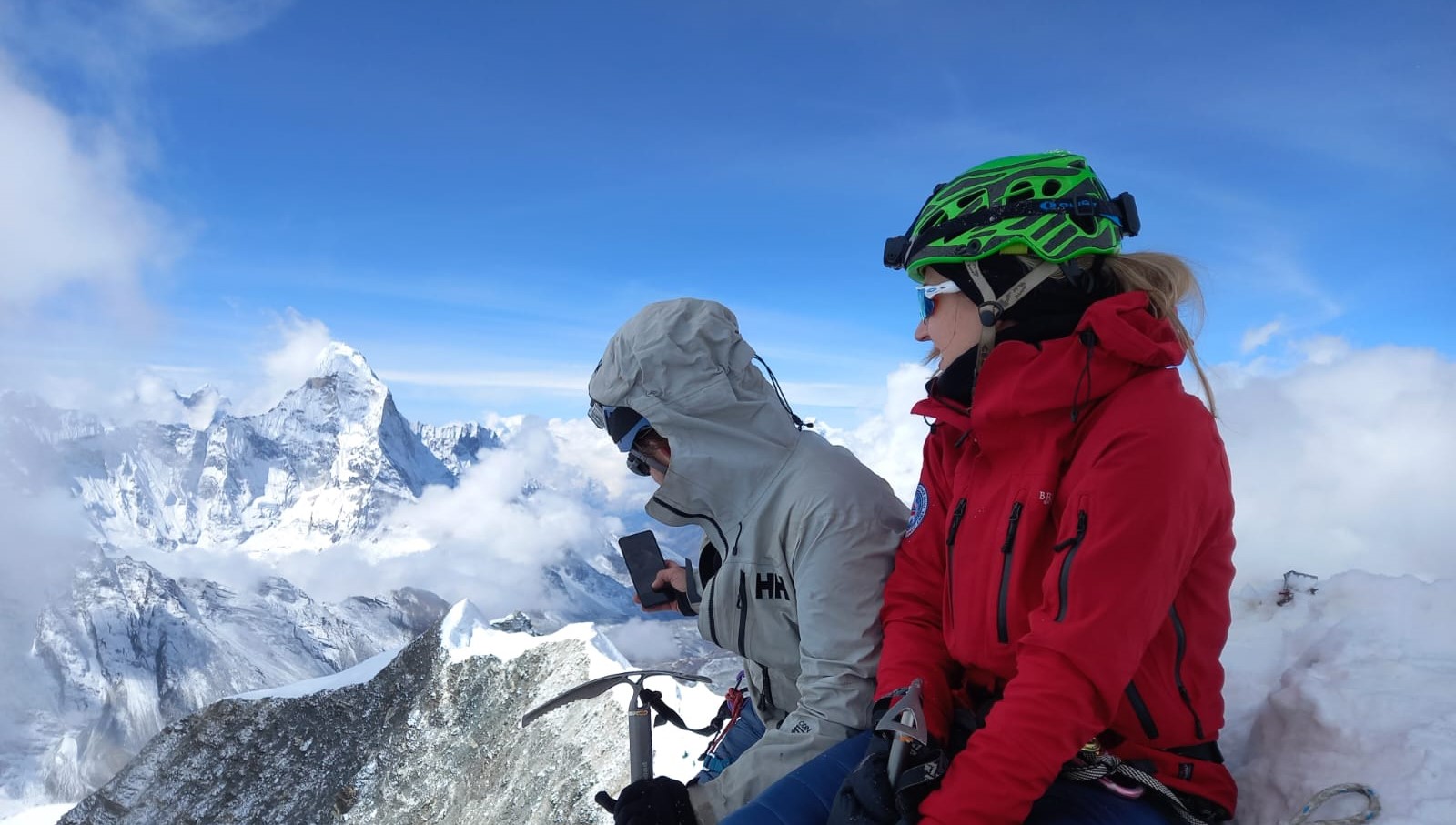
ISLAND PEAK EXPEDITION 14 DAYS
Island Peak Expedition is a 14-day adventure tour that takes you to the heart of the Himalayas, where you can witness the beauty of the mountains, valleys, and glaciers. Island Peak, also known as Imj...
Island Peak Climbing Cost
The cost of climbing Island Peak varies depending on several factors such as the trekking agency, services included, duration of the expedition, and group size. On average, the cost ranges from USD 3,000 to USD 6,000 per person. This typically covers climbing permits, guide and porter services, accommodation, meals, trekking and climbing equipment, transportation, and insurance.
Additional costs may include international flights, visas, personal gear purchases or rentals, tips for guides and porters, and contingency expenses. Choosing a reputable trekking agency ensures safety, quality services, and support throughout the expedition, making Island Peak climbing a worthwhile investment for mountaineering enthusiasts seeking a challenging Himalayan adventure.
Is Island Peak Expedition For You?
Island Peak expedition is suitable for experienced trekkers with basic mountaineering skills looking to elevate their adventure with a technical climb in the Himalayas. Climbers should have prior experience at high altitudes and be physically fit to endure long trekking days and challenging climbing sections.
Participants must be prepared for cold weather conditions and be comfortable with technical climbing using ropes, crampons, and ice axes. The expedition demands mental resilience, adaptability to changing weather, and adherence to safety protocols. Engaging with a reputable trekking agency that provides experienced guides and comprehensive logistical support enhances the overall experience, ensuring safety and success on Island Peak.
How do you Train for Island Peak Climbing?
Training for Island Peak climbing involves a combination of cardiovascular fitness, strength training, and altitude acclimatization. Recommended training includes:
Cardiovascular Fitness: Engage in aerobic exercises like hiking, running, cycling, or swimming to improve endurance and stamina.
Strength Training: Focus on leg muscles, core strength, and upper body to handle the physical demands of trekking and climbing.
Altitude Acclimatization: Plan gradual ascents to high altitudes during training hikes to adapt to reduced oxygen levels.
Technical Skills: Practice using climbing equipment such as crampons, ice axes, and harnesses under the guidance of experienced climbers.
Consistent training over several months before the expedition enhances physical preparedness and mental resilience, increasing the likelihood of a successful climb on Island Peak.
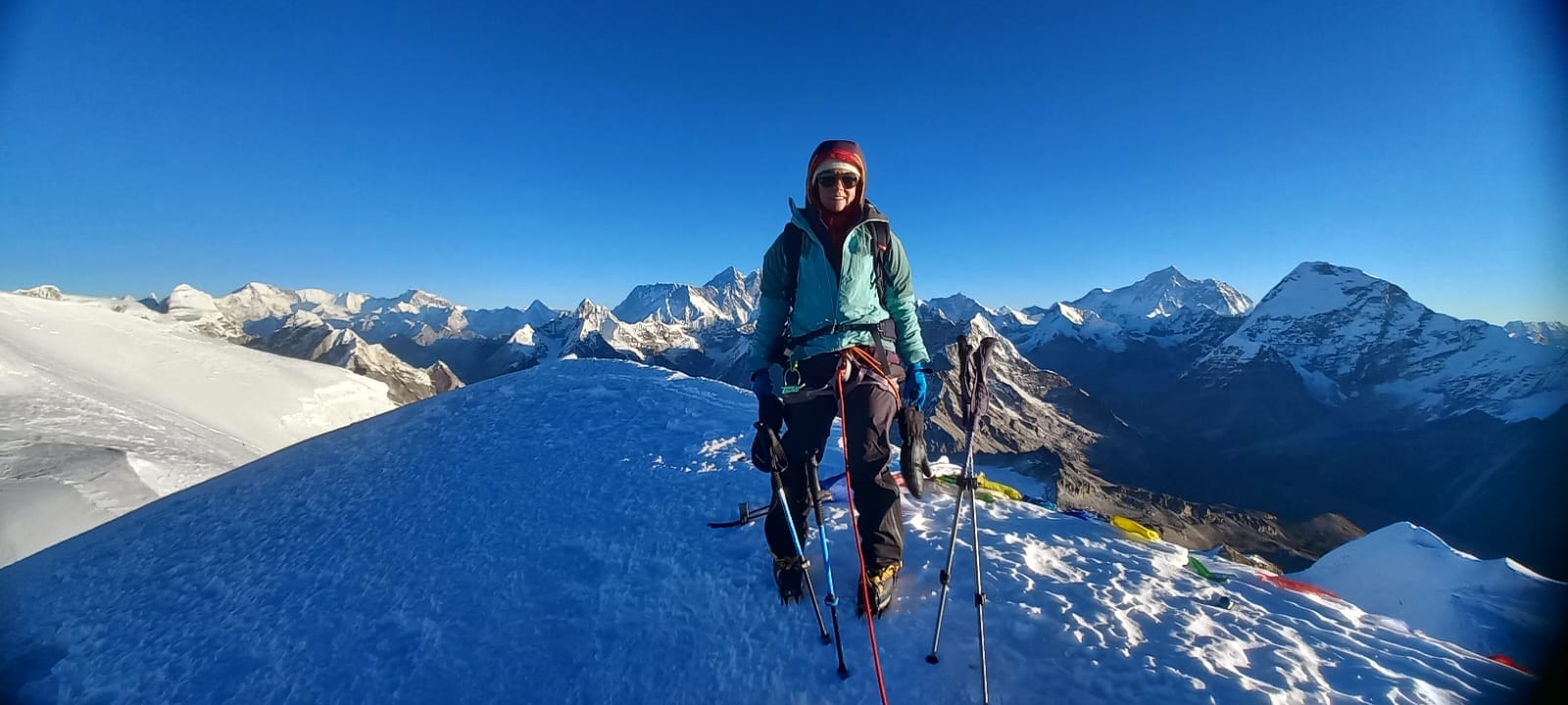
Three Peak Expedition
Embark on an unforgettable journey to the heart of the Himalayas as you conquer three majestic peaks: Mera Peak, Island Peak, and Lobuche Peak. This ultimate adventure combines technical climbing, bre...
Does Island Peak Climbing require prior climbing experience?
Yes, Island Peak climbing requires prior climbing experience, particularly in using mountaineering equipment and techniques. Climbers should be comfortable with basic rope skills, glacier travel, and ascending steep slopes with fixed lines. While it is possible for experienced trekkers to undertake comprehensive training under professional guidance, prior experience in high-altitude trekking and basic mountaineering is highly recommended.
What are the possibilities of getting altitude sickness during Island Peak Climb?
Altitude sickness, including symptoms like headaches, nausea, dizziness, and fatigue, is a potential risk during the Island Peak climb due to the high altitudes involved. Proper acclimatization is crucial, involving gradual ascent and adequate rest periods to allow the body to adjust to reduced oxygen levels. Hydration, nutrition, and recognizing symptoms early are essential for managing altitude sickness.
How challenging is the Island Peak Climb?
Island Peak climbing is considered challenging due to its technical ascent, steep sections, and high-altitude environment. Climbers navigate crevassed glaciers, ascend icy slopes, and use fixed ropes on steeper sections nearing the summit. The climb requires physical fitness, mental determination, and technical proficiency with climbing gear.
How long does it take to climb Island Peak?
The duration to climb Island Peak varies depending on the chosen itinerary, weather conditions, and climber's fitness. Typically, the expedition lasts around 17 to 20 days, including trekking to and from Lukla, acclimatization days in the Everest region, and climbing days to reach Island Peak Base Camp, High Camp, and summit. Weather windows and proper acclimatization play crucial roles in determining the overall duration and success of the climb.
Is Mt. Everest visible from the Island Peak summit?
Yes, on clear days, climbers are rewarded with stunning panoramic views from the Island Peak summit, including vistas of Mount Everest (8,848m), Lhotse (8,516m), Nuptse (7,861m), and several other Himalayan peaks. The breathtaking scenery from the summit enhances the sense of achievement and makes Island Peak climbing a memorable experience for mountaineers.
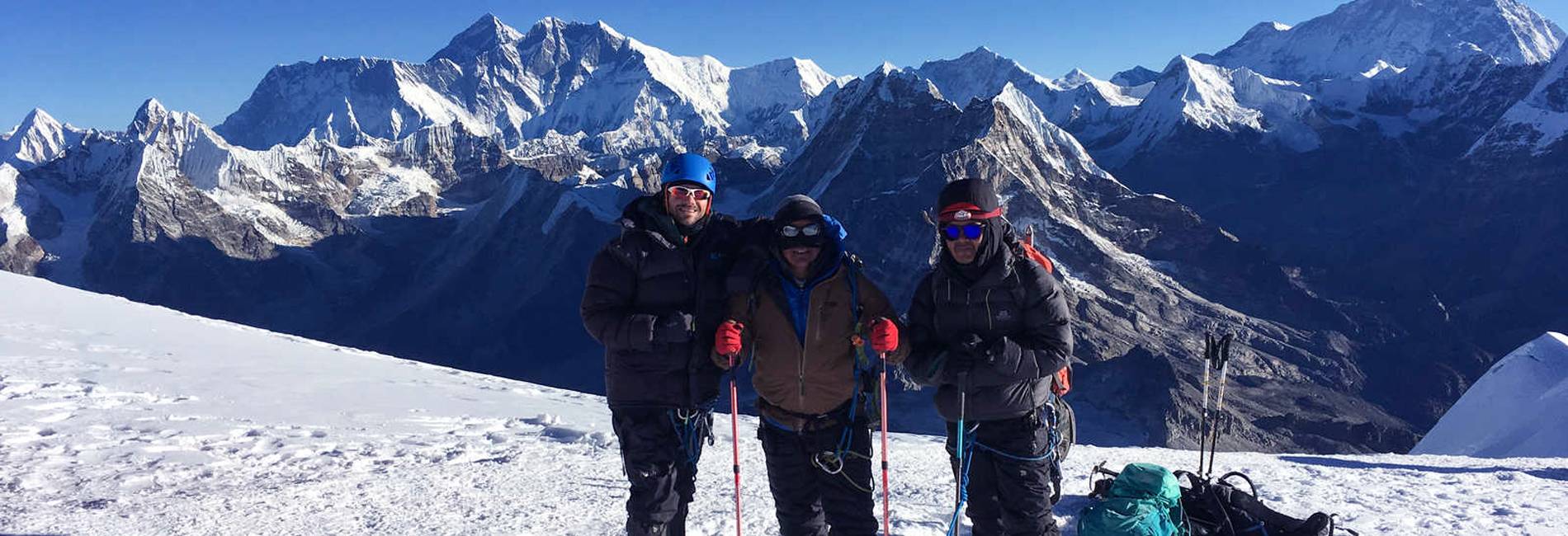
MERA PEAK CLIMBING
Mera Peak Climbing is an exhilarating adventure in Nepal that gives you an opportunity to reach the summit of Mera Peak at more than 6400m above sea level. Actually, it is the highest climbing (w...
Final Say
Island Peak climbing offers a challenging and rewarding mountaineering adventure amidst the majestic Himalayan peaks. With proper preparation, training, and guidance from experienced Sherpa guides, climbers can conquer this iconic peak and enjoy breathtaking views from the summit. The expedition demands physical fitness, mental resilience, and a passion for high-altitude adventure, making Island Peak a popular choice for mountaineering enthusiasts seeking a memorable Himalayan climbing experience.
Island Peak Climbing Packages
Island Peak Summit Return By Helicopter
Island Peak Expedition 14 Days
Island Peak Expedition 15 Days
Everest Three Pass with Island Peak Climbing
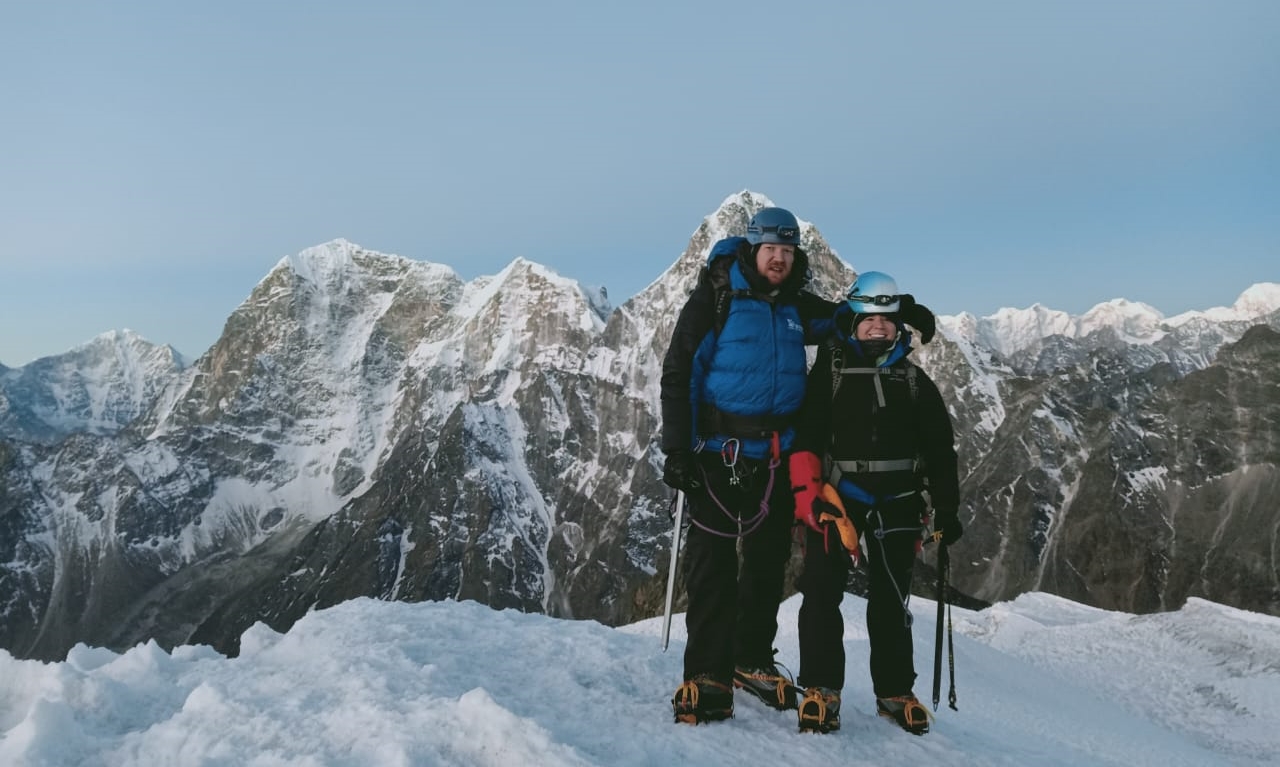
LOBUCHE PEAK CLIMBING
Lobuche East (6,119m/20,075ft), set in Nepal's stunning Khumbu on the Nepalese side of Everest.The best time to go trekking in Nepal is in Autumn (September-November) and in...
Any Questions? Let Us Know.
Recent Posts
17th June, 2025


















